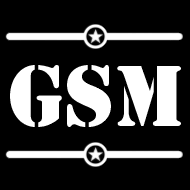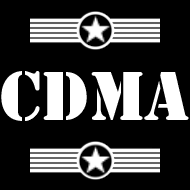HS(D)PA and UMTS are high-speed cellphone data protocols. HS(D)PA stands for High Speed (Downlink) Packet Access. The (D) is optional, so I'll just call it HSPA from now on. UMTS stands for Universal Mobile Telecommunications Standard. UMTS is a 3G technology, but it is currently being developed into a 4G technology. UMTS is sometimes called 3GSM, because it was meant to succeed the GSM standard. While UMTS is technically based of GSM, it uses the air interface (the soft radio interface between the handset and the cell tower) of W-CDMA. I know it's confusing, but bear with me. A lot of carriers are moving to UMTS as a transition technology before moving to HSPA, since HSPA is an evolution of W-CDMA. HSPA is designed to increase the available data rate by a factor of five or more. HSPA is named as such because it actually creates another W-CDMA channel called the High-Speed Downlink Shared Channel (HS-DSCH) that is used only for data and operates differently than a regular W-CDMA channel.
If you haven't been paying attention, here's the progression:
CDMA2000/IS-95/cdmaOne/GSM -> W-CDMA -> UMTS ->HS(D)PA
HSPA is fully backwards-compatible with EDGE, the current popular GSM data protocol, as well as W-CDMA, so you don't need to change your handset when HS(D)PA is rolled out, unless you want to take advantage of HSPA speeds.
Friday, February 27, 2009
302-640

A user on a cell-phone discussion forum discovered a network called "302-640" in the Richmond Hill, ON area with his Blackberry Storm. It is a 3G network using UMTS technology, which according to Telus' website is being developed jointly by Telus and Bell for their slowly emerging 3G and 4G networks. It seems to be a test of sorts. The network name, according to the International Telecommunications Union, 302-640, corresponds to the MNC (Mobile Network Code) of a Bell channel using UMTS 850Mhz and 1900Mhz bands. According to a Telus tech in the area, they are doing test rollouts of their 3G and 4G network infrastructure, which is being provided by Nokia Siemens Networks and Huawei. The user who found the network reported that while able to connect and make SOS (Emergency 911) calls, he was not able to make a phone call or come across a voice or data channel.
Wednesday, February 18, 2009
GSM vs. CDMA
This debate has been raging on for years. Allow me to give you some background on the two technologies so you can make an informed decision. CDMA stands for "Code-Division Multiple Access". CDMA is a "channel access method". A channel access method allows multiple terminals (in this case, cellphones) to connect over the same multi-point physical medium. In essence, a channel access method allows multiple cellphones to connect over the network using the same radio frequency by divvying up the radio channel in different ways.
There are four major channel access methods. They are:
There are four major channel access methods. They are:
- FDMA (Frequency-Division Multiple Access) provides different frequency bands to different datastreams, which basically gives each cellphone its own radio frequency. This method was used in AMPS and requires the most available radio frequencies.
- TDMA (Time-Division Multiple Access) gives each cellphone using a radio channel a time slot in which they access the cell tower. For example, during milliseconds 1-2, handset 1 transmits data. Then, from milliseconds 2-3, handset 2 transmits its data. Then, on milliseconds 3-4, handset 1 transmits more data, and so on. This makes it appear as though both handsets are transmitting simultaneously. TDMA has a tendency to cause dropped calls, however.
- CDMA (Code-Division Multiple Access) modulates the signal sent by the cellphone using a specific code given to it by the cell tower. Each handset has its own specific code, assigned by the tower. The data sent by the phone is modulated using the code, and the tower differentiates between each cellphone's data by seeing how the signal is modulated and comparing that to the code assigned to each phone. This allows multiple handsets to transmit over the same channel.
- SDMA (Space-Division Multiple Access) is also called MIMO (Multiple-In Multiple-Out) which means that one handset sends out multiple signals to multiple cell towers. This frees up a lot of bandwidth by effectively dividing the bandwidth of the handset's transmission by the number of towers it's transmitting to.
Tuesday, February 10, 2009
Background
Cellphones have been around for a long time, but they have only recently transitioned from analog technology to digital technology. In 1946, Bell Labs created the very first mobile telephone system, using MTS technology (Mobile Telephone System). The MTS telephones weighed 80 pounds and all calls were operator-assisted. This standard was used up until the 1980s in many parts of North America. It was replaced by IMTS (Improved Mobile Telephone System) which was basically a UHF/VHF radio that connected to the PSTN (Publicly Switched Telephone Network) system. This is referred to as 0G. After this came AMPS (Advanced Mobile Phone System.)
AMPS is referred to as 1G and was the premier analog technology up until the late 2000's. AMPS operated on the 800MHz band. In the '90s, cell phone cloning became a huge issue. To clone a phone, all you had to do was tune into the Reverse Channel (the channel the phone transmits data to the tower on), decrypt the ESN/MIN (Electronic Serial Number/Mobile Information Number) pair, and then program those numbers into an easily-programmed phone, and they had an exact copy of someone else's phone, making calls on their account.
After AMPS came GSM (which uses TDMA, or Time Division Multiple Access) and CDMA (Code Division Multiple-Access) technology, which are both 2G technologies. In the United States and nearly every other country on the planet, GSM is used. In Canada, CDMA (cdmaOne or IS-95, whichever sounds cooler). Both these technologies are fully digital and both bring with them dedicated internet data services. CDMA uses the EDGE or 1xRTT service for data, which has a superior data rate over GPRS (Global Packet Radio System) which is what GSM uses for data.
AMPS is referred to as 1G and was the premier analog technology up until the late 2000's. AMPS operated on the 800MHz band. In the '90s, cell phone cloning became a huge issue. To clone a phone, all you had to do was tune into the Reverse Channel (the channel the phone transmits data to the tower on), decrypt the ESN/MIN (Electronic Serial Number/Mobile Information Number) pair, and then program those numbers into an easily-programmed phone, and they had an exact copy of someone else's phone, making calls on their account.
After AMPS came GSM (which uses TDMA, or Time Division Multiple Access) and CDMA (Code Division Multiple-Access) technology, which are both 2G technologies. In the United States and nearly every other country on the planet, GSM is used. In Canada, CDMA (cdmaOne or IS-95, whichever sounds cooler). Both these technologies are fully digital and both bring with them dedicated internet data services. CDMA uses the EDGE or 1xRTT service for data, which has a superior data rate over GPRS (Global Packet Radio System) which is what GSM uses for data.
Subscribe to:
Comments (Atom)



 My nickname bears no real importance or symbolism. The day I came up with it was January 9, 2005. That was the day I saw Stanley Kubrick's masterpiece "Full Metal Jacket". I was in desperate need for a nickname for Halo 2 and I couldn't really think of anything, so I just changed "jacket" to "parka" and here I am.
My nickname bears no real importance or symbolism. The day I came up with it was January 9, 2005. That was the day I saw Stanley Kubrick's masterpiece "Full Metal Jacket". I was in desperate need for a nickname for Halo 2 and I couldn't really think of anything, so I just changed "jacket" to "parka" and here I am.




